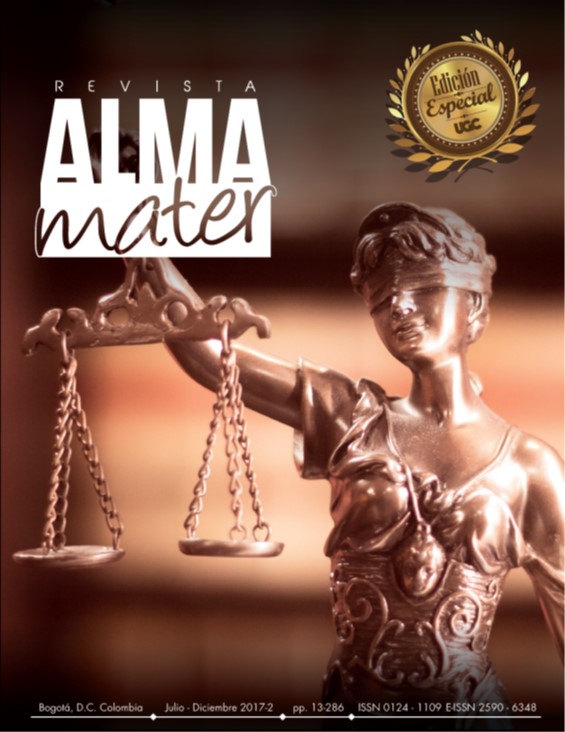Abstract
In contrast to juvenile criminal offenses, there are a number of conflicting issues, such as criminal responsibility for the best interests of the child, human rights, criminal law for adults, criminal policy and state institutions, the society and the co-responsibility of all the actors. On the other hand, a principle in the Penal Code originates the incapacity for the minor, in the understanding that, under the age of less than eighteen years and greater than 14 years, from which generates a system that recognizes the responsibility of adolescents and uses procedural rules and criminal penalties similar to the criminal system for adult offenders. The foregoing promotes the study in Latin American countries of the situation that afflicts society and it is observed that in each of the laws presents a marked tendency of lack of study and experts in the law of minors that provides security on the conduct of minors in the face of normativity and its consequences. As a result of the excessive increase in juvenile criminal offenses, it was possible to design a system of criminal responsibility for adolescents, as a parallel system, one of its guidelines is to apply an oral procedure similar to the criminal accusatory system or Law 906 of 2004. With the exception of the reservation that establishes the superior interest of a minor in relation to the subject of publicity. However, if one takes into account that the immaturity of the child leads us to deduce that the minor is not imputable, but responsible, because he has the capacity to understand the scope of his actions and the consequences thereof. This generates a responsibility of all kinds in the understanding that criminal responsibility is the one under discussion, since civil liability is clear and that is not only for him, but is configured as a co-responsibility, which indicates that it is joint with their parents or representatives. It is concluded that the norms and their application do not obey the problematic that is being faced, but, if it is coherent with all the international regulations that oblige to guard, protect, reeducate and guarantee the rights of the children, then, one must advance in the reality that the statistical and scientific studies present and local of our idiosyncrasy show.
References
Aramburo, N. (2009). Problemas del tratamiento legal y terapéutico de las transgresiones juveniles de la ley en Colombia. Pensamiento Psicológico (pp. 173-191).
Arboleda, C., Baquero, M, & Domínguez, M. (2010). La Inimputabilidad del Menor en el sistema Penal Colombiano. Pontificia Universidad Javeriana. Bogotá (Colombia) N° 7: 157-174.
Arce, R., Fariña, F., Vásquez, M. (2011). Grado de competencia social y comportamientos antisociales, delictivos y no delictivos en adolescentes. Revista Latinoamericana de Psicología. (pp. 473).
Belloff, M. (2000). Algunas confusiones en torno a consecuencias jurídicas de la conducta transgresora de la ley penal. (pp. 29-69). solicitar en centro: 00, 39,3I, 50, 80, E0, Nro. Referencia: 0067346.
Cabello., M. (2002). Sociología de la cultura y Sociología cultural: la situación en España. Universidad Alfonso X El Sabio, Madrid.
Cárdenas, N.L. (2009). Menor infractor y justicia penal juvenil. Arequipa, Perú: Universidad Católica de Santa María. Escuela de Post Grados.
Corte Constitucional de Colombia. Sentencia C-839 de 2001. MP Marco Gerardo Monroy Cabra.
Corte Suprema de Justicia, Sala de Casación Penal, Sentencia de febrero 24 de 2010, MP. José Leónidas Bustos Martínez.
Cruz, E., (2010). Los menores de edad infractores de la ley penal. Madrid, España: Universidad Complutense de Madrid: Facultad de Derecho, Departamento de Derecho Penal.
Decreto 2737 de 1989 [Con fuerza de ley]. Por medio del cual se expide el Código del Menor. Noviembre 27. Diario Oficial No. 39.080 de 27 de noviembre de 1989.
Dewey, J. (1971). Democracia y educación. Buenos Aires: Losada, (pp. 131-132).
Documento. Conpes. Consejo Nacional de Política Económica y social... DJSG, DDS, DIFP, OAJ. Versión aprobada. Bogotá D.C., Diciembre 14 de 2009.
Durkheim, E. (1975). Educación y sociología. Barcelona, Península, (pp.106-107).
Fermoso, P. (1982). Teoría de la Educación. Barcelona, CEAC, (pp. 56-58).
García, A. (1995). Infancia y Derecho Humanos – Estudios Básicos de Derechos Humanos II. (pp. 298). Primera Edición, San José de Costa Rica.
Jellinek, G. (1903). Teoría General del Estado, la reimpresión 2002, (pp 687). (Prólogo y traducción Fernando de los Ríos). México, FCE.
Congreso de la Republica de Colombia, mediante la Ley 1098 de 2006. expide el Código de la Infancia y la Adolescencia. Noviembre 8. Diario Oficial No. 46.446 de 8 de noviembre de 2006.
Treceavo Congreso de Psiquiatría. (2012). Informe Interpsiquis. Recuperado de http://www.interpsiquis.com.

This work is licensed under a Creative Commons Attribution-NonCommercial-ShareAlike 4.0 International License.
Copyright (c) 2017 Rosa Cecilia Blanco (Autor/a)


